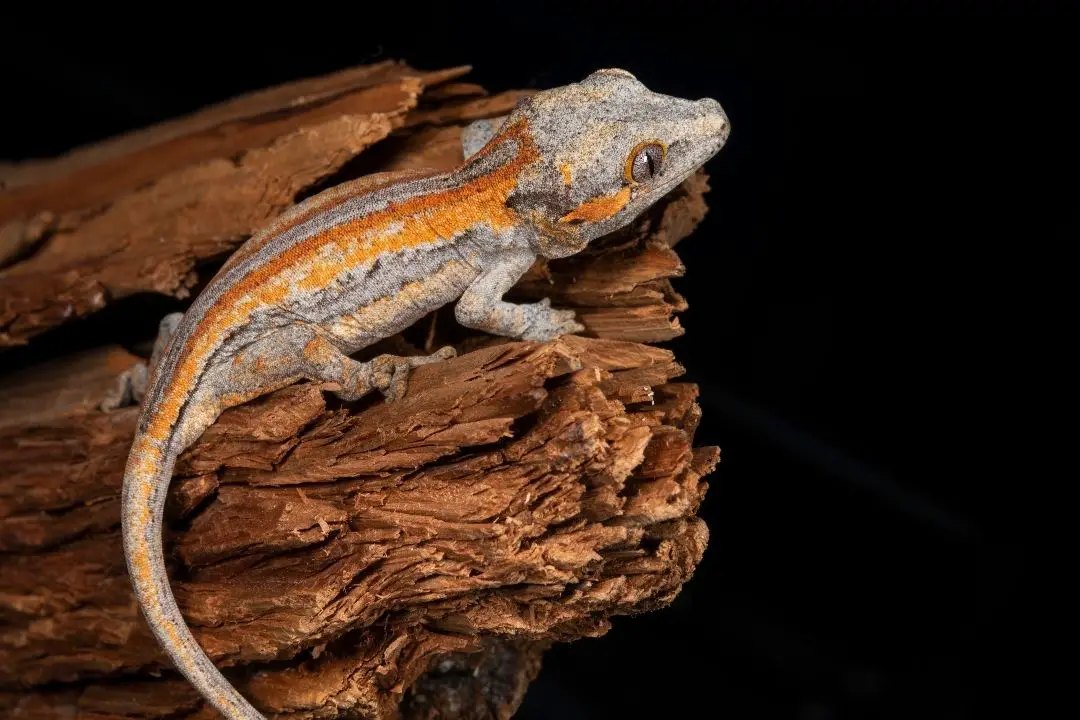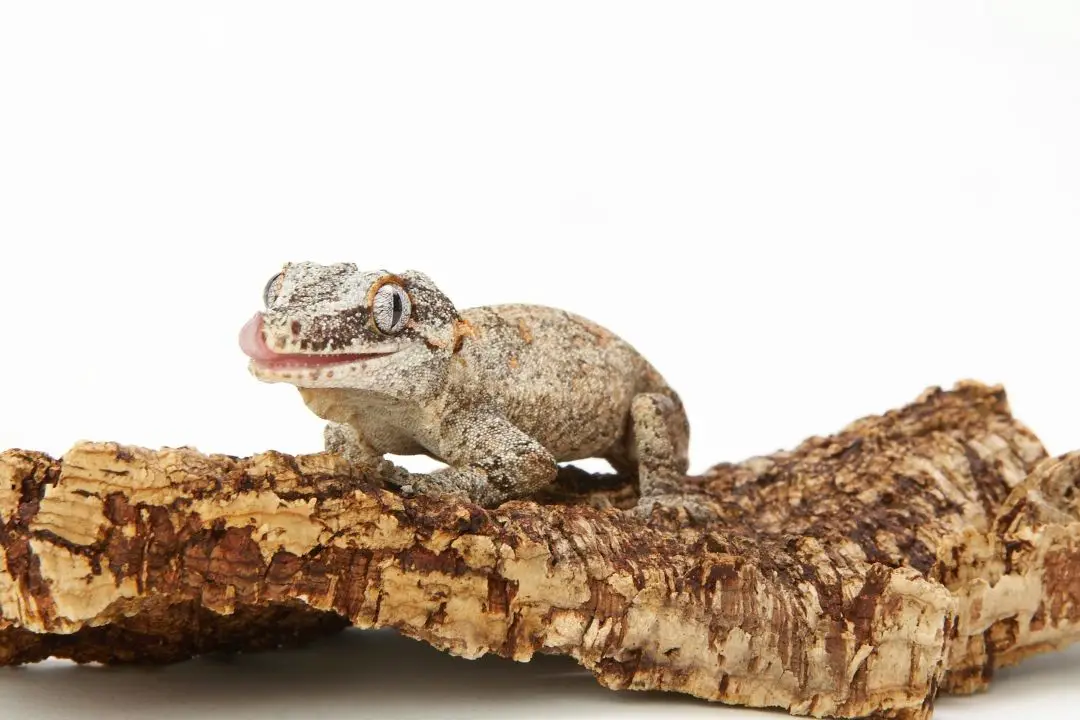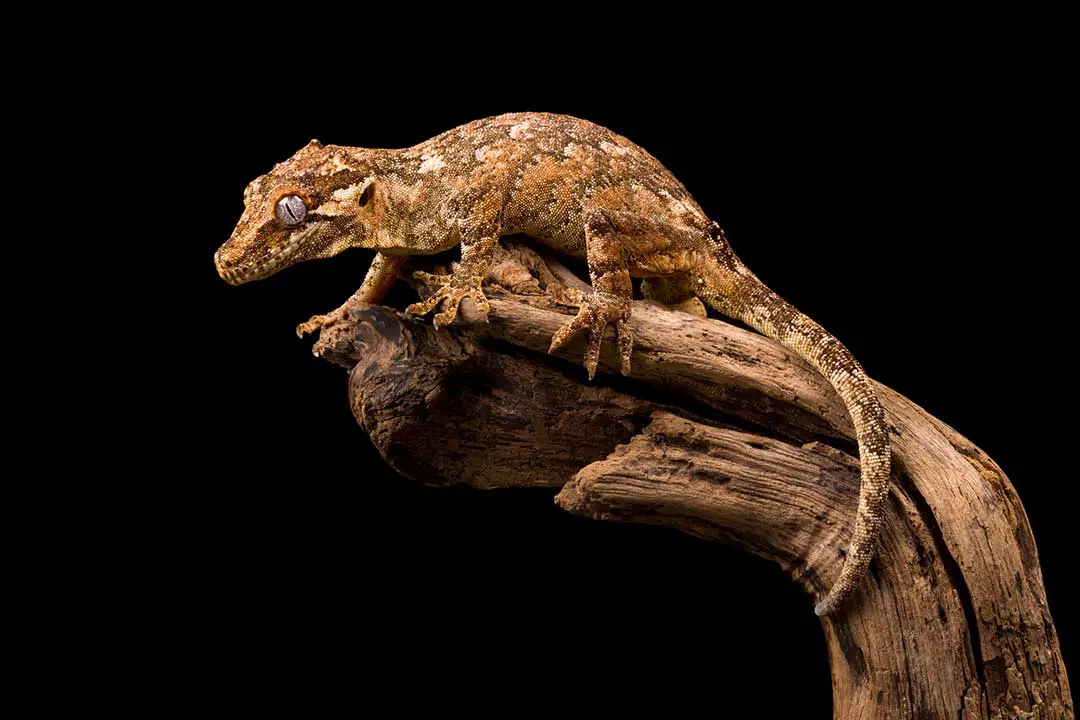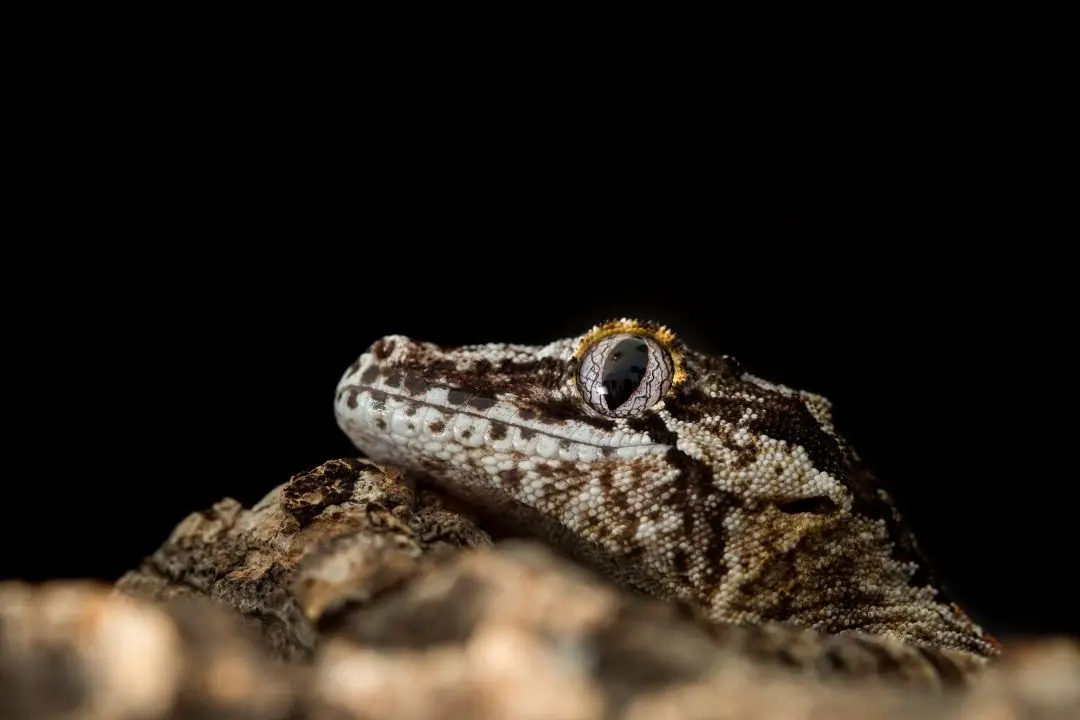The gargoyle gecko (Rhacodactylus auriculatus) is a popular pet gecko.
These little guys breed easily and are great for beginners. Because of these, a number of unique colors and patterns are available.
For a complete guide to enclosure setup, feeding, daily care and breeding,
check out my Gargoyle Gecko Care Sheet
These morphs allow you to find a gorgeous gecko that you will love.
Gargoyle gecko morphs are typically split into base patterning, base color, pattern color, and structural differences.
This list will show you some wonderful morphs to show you what is out there. By the end, we hope you will be able to read a listing about a gargoyle gecko and know exactly what the breeder means about its colors and patterns.
1. Striped
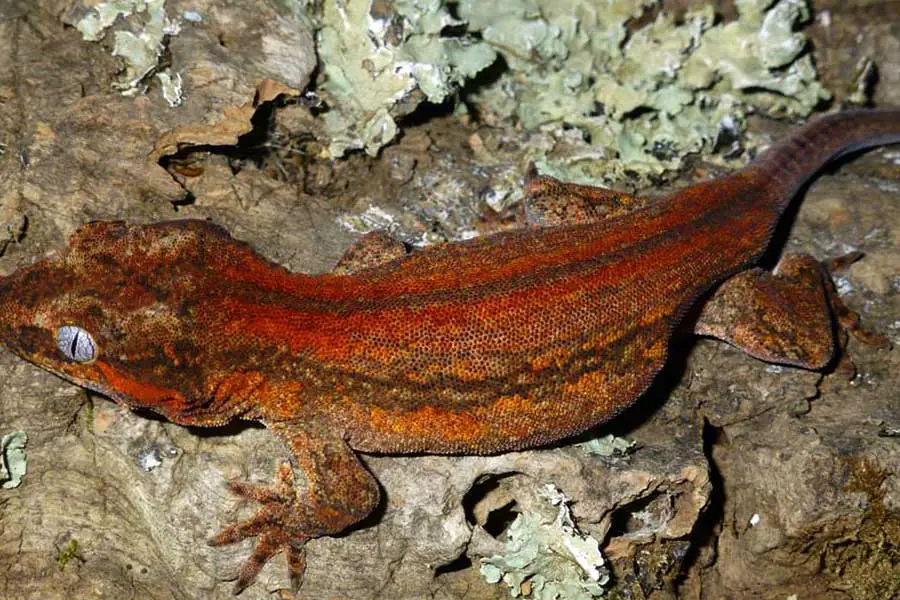
Stripes are one of the most common patterns in gargoyle geckos. Most gargoyle geckos have stripes along the side of the gecko.
Many animals will also have a stripe down the spine. Generally, the stripes will be most visible when the animal is “fired up”.
The stripes are only the part that has dark pigmentation. Color stripes are generally counted as separate traits like ‘orange stripe’ or the common red striped gargoyle geckos. You can see a mottled or broken appearance to the stripes and it will still count as a striped gecko.
2. Super Stripe
Super stripe is the name for more intense striping in gargoyle geckos. These animals will have more patterning that covers more of the body including the limbs and original tail.
Many breeders set four to six sets of pattern stripes as the standard.
The dorsal stripe tends to be thicker and extends into the tail. This is not required but is a common trait of super stripe gargoyle geckos.
3. Base Color
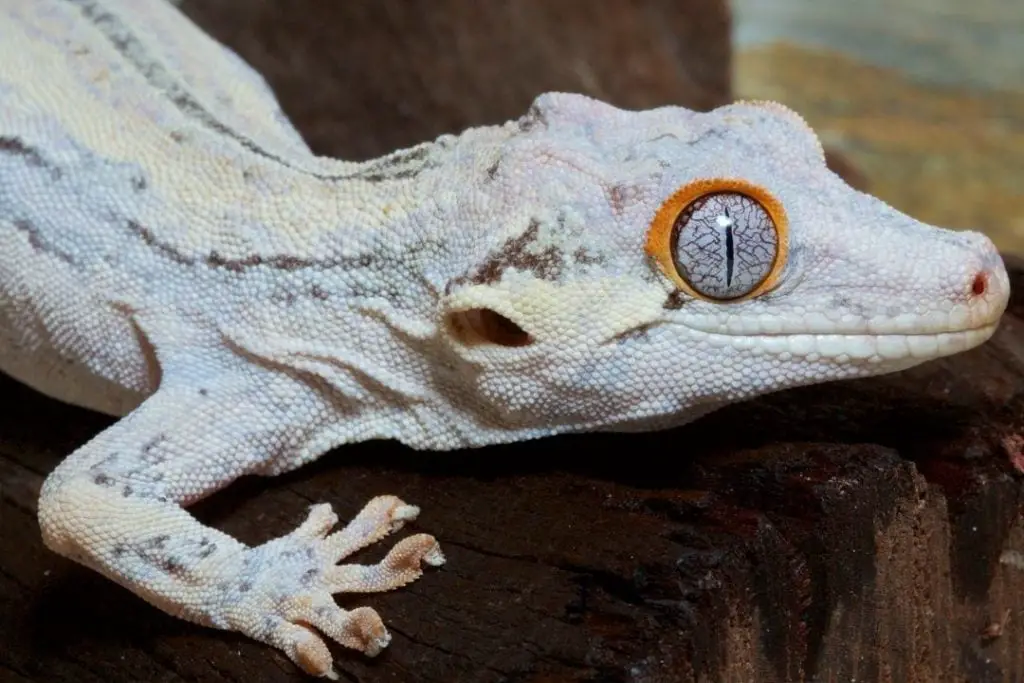
When you are reading listings from gargoyle gecko breeders, you will see a number of entries listing things like “red base” or “white base”.
This refers to the base color of the animal rather than any pattern color. The base color will be most visible when the animal is fired up. Brown base is the most common in wild gargoyle geckos.
It can look yellow and yellow base geckos can look brown when they fire up, so it can be a struggle to tell them apart. Other colors that can be found are red, orange, pink, and white.
Orange can be told from lighter reds by checking the belly.
Pink geckos will not get very dark when fired up.
The white base color is rarely seen and only animals that stay white will be called a white base. If there is any brown pigmentation or yellow, they are considered to be that base color instead.
4. Pattern Colors
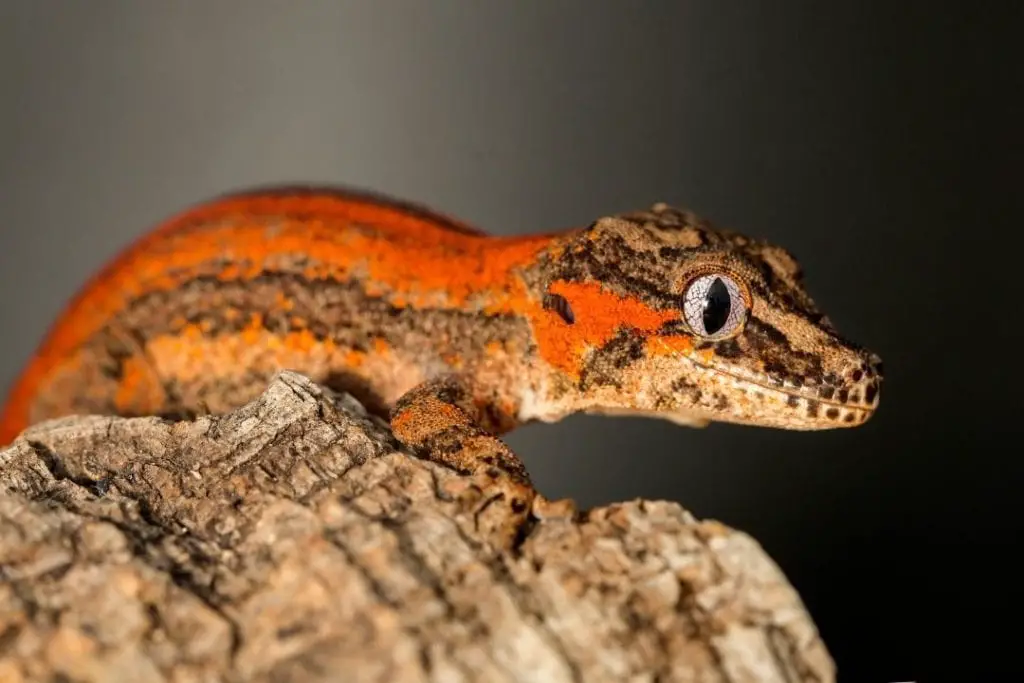
Pattern colors are typically seen at all times. The pattern color rarely changes no matter whether the gecko is fired up or down. The pattern color can look like stripes or be in other positions depending on the animal.
They may have bars of color on the back on either side of a dorsal or side stripe and there can be colored areas on the sides of the animal.
Red is the most common color and can be anywhere from light to dark. Orange is most commonly seen on animals with a yellow background color.
White is typically only seen on striped animals. You may see gargoyle geckos sold as “bacon”. This refers to an animal with both orange and red pattern colors.
This is pretty common in hatchlings but adults rarely keep it. If you like this look, be sure to buy an adult animal.
5. Reticulated
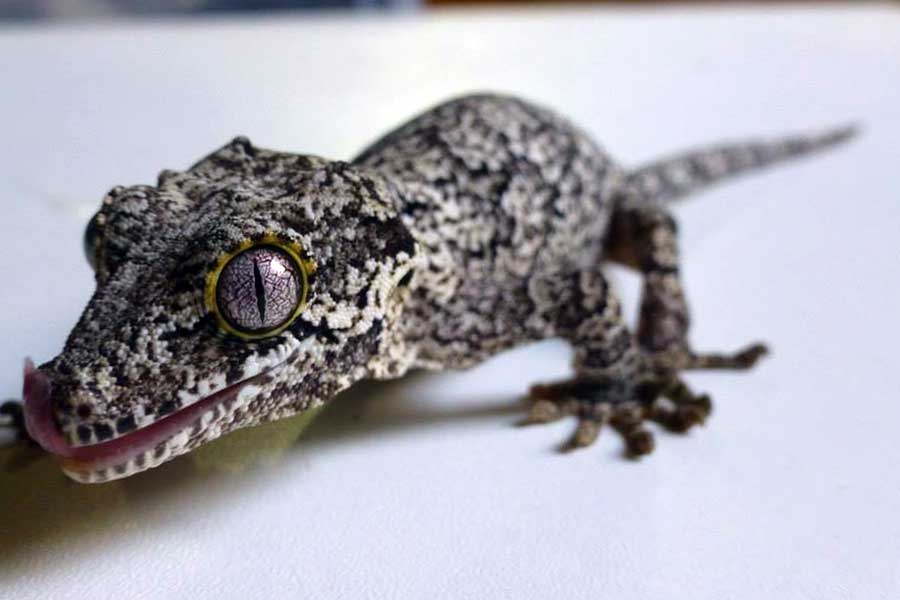
Reticulated gargoyle geckos have an aberrant pattern that spreads over the whole animal. This means that the dark pigmentation follows no defined pattern on the whole of the animal.
This is one of the most gorgeous gargoyle gecko morphs, yet it is pretty common in wild gargoyle geckos, but wild geckos do also have striped patterning. This can be hard to see when fired down since the dark pigmentation will be hard to see.
Some animals may almost look banded, but they will not have enough definition to be called banded.
6. Banded Pattern
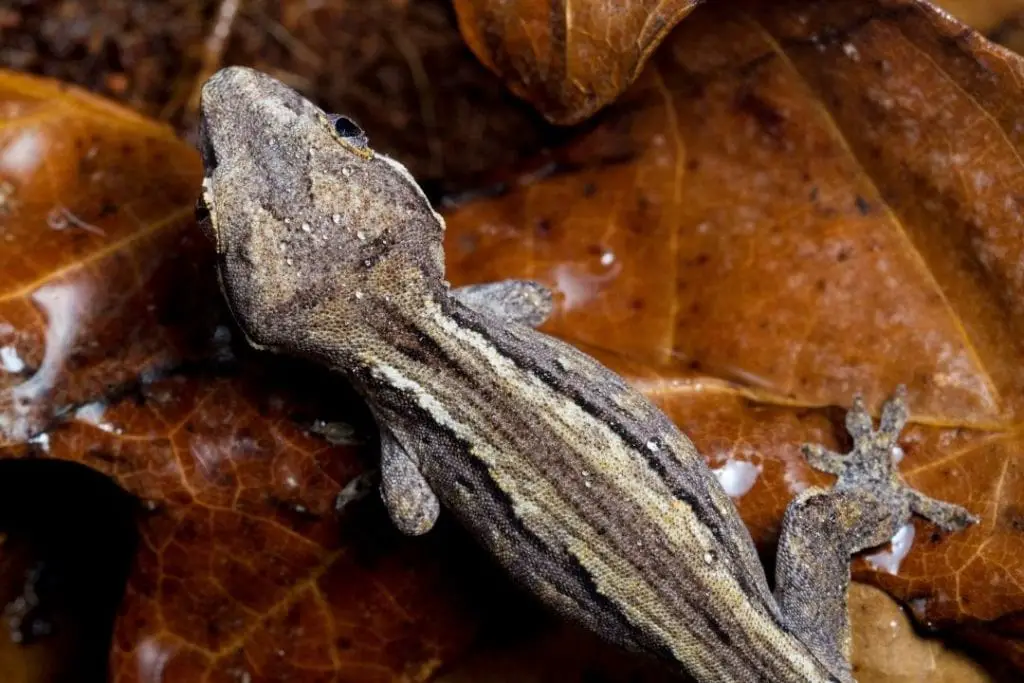
The banded pattern is similar to the reticulated base pattern but has a predictable pattern. The banded patterning starts at the spine and goes laterally down the side of the animal.
This can be told apart from stripes since stripes always travel down the length of the animal. Some animals with a reduced banding are called Alterna after the scientific name for the gray-banded kingsnake.
7. Mosaic
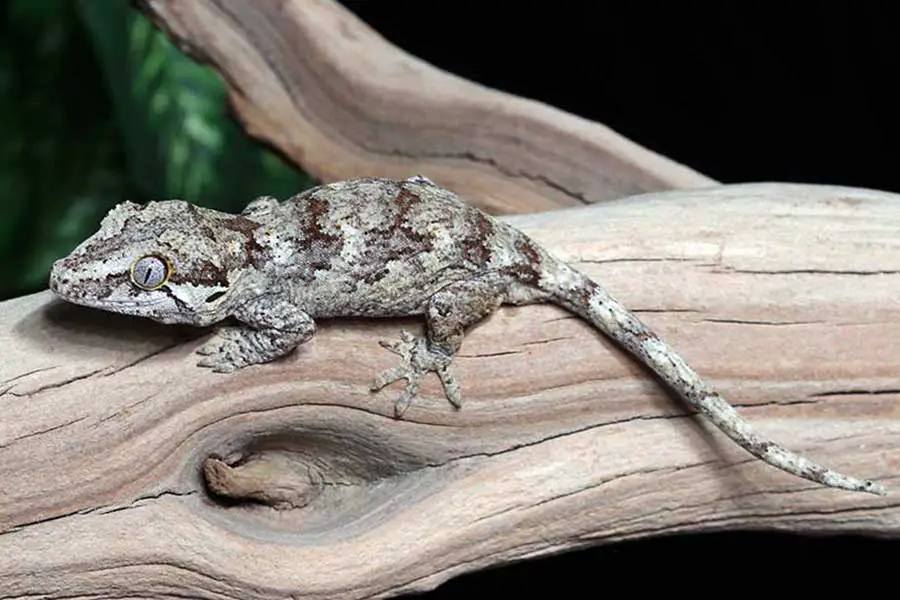
Mosaic gargoyle geckos show traits of the striped, banded, and reticulated patterns without fitting into any of them. The pattern is random and shows no consistency over the entire body.
This particular gene is still being experimented with since animals with lower expression are frequently mistaken for striped or reticulated animals.
8. Mottled
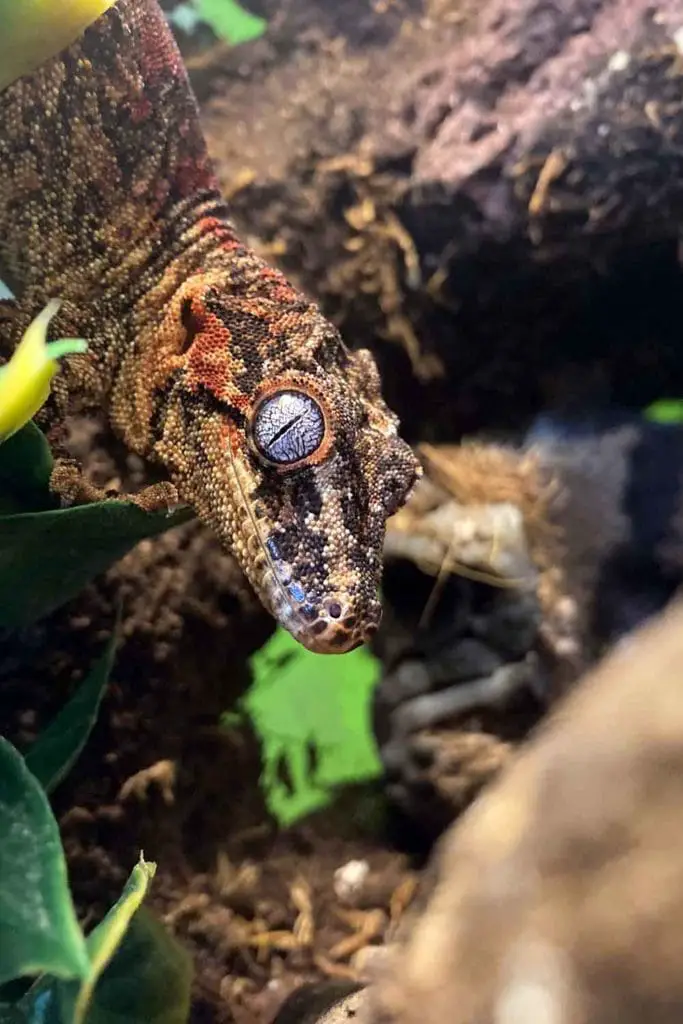
Mottled animals have a similar pattern to the reticulated geckos but have uniformity to the pattern that sets them apart. They do not have full banding.
This trait is rare and can also be called marbled, dappled, streaked, flecked, and stippled.
9. Blotch and Super Blotch
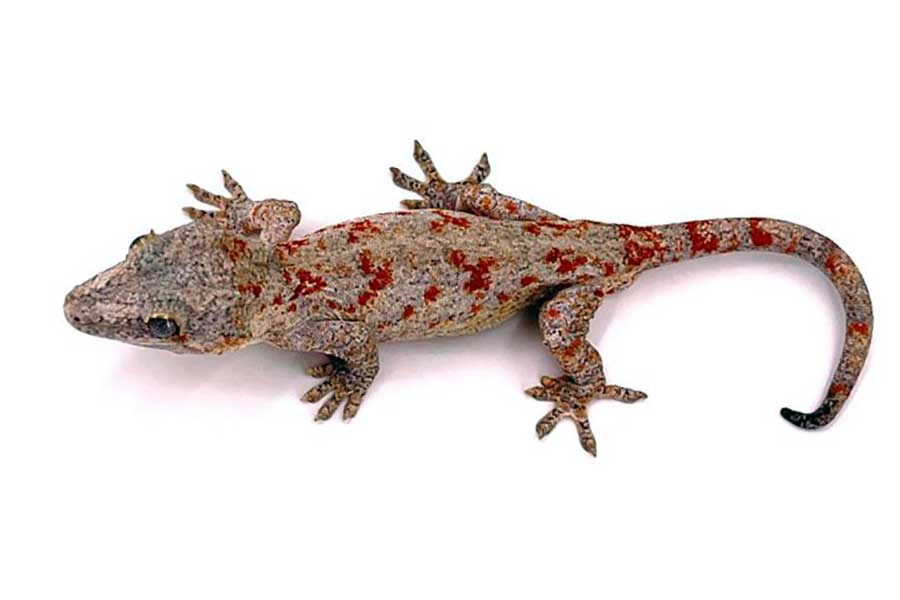
This is only found on reticulated and banded animals. It is considered a pattern color and is blotches of color that typically follow the base pattern of the animal, orange blotches or red blotches usually. Banded animals will have bands of color.
Some striped base pattern animals will look blotched, but they just have broken bars of their pattern color. Super blotch is just a more intense expression of the blotched color pattern.
10. Dorsal Blotch and Skeleton
This is a color pattern only found on reticulated base pattern geckos.
Instead of the color blotches being placed randomly or following the base pattern, it is found only along the spine has no defined pattern edging.
Skeleton refers to geckos that have dorsal blotching and color banding.
11. Exaggerated Horns and Horned Crowns
Gargoyle geckos are named for the bumps on their skulls. Some breeders select for exaggerated horns in their geckos.
This means that the normal horn structure on the back of the skull is larger and more obvious. It typically appears after about 3 months of age.
The horned crown is an exaggerated horn structure that forms a crown structure on the head. It isn’t always easy to see in photos but is very obvious in person.
12. Phantom Eye
The phantom eye trait is rare since it is only seen in adult geckos. It tends to take between 3-6 years for the gargoyle gecko’s eyes to change color.
They will be born with a typical light eye color that will change to a near black as the animal ages. Since it takes so long to appear, it is still being bred for. You may get a surprise with your gecko.
13. Spectacles/Eye Rings
This is a trait that refers to the ring of scales around the eyes always having a color no matter whether the animal is fired up or down. Yellow is the most common color, then red, and finally orange is the rarest color.
14. Unique Color Traits
There are a few other color traits you may come across in listings from the best gargoyle gecko breeders.
Blue eyes refer to lighter eyes with a blue tint. Blush is typically seen in high color animals and may also be called a tear. This is a color patch found right below and behind the eye near the corners of the mouth.
Lipstick is when the blush extends to the lips of the animal and may be found blotched around the whole mouth.
Eyebrows are a blotch of color above the eyes that look like eyebrows on a human. All of these traits are just variations in where the color is placed on the animal.
We hope this taught you a bit about gargoyle geckos and their morphs. Unlike many other reptiles like crested geckos, you tend not to see fancy names for specific morphs in gargoyle geckos.
If you have any questions or comments, please leave them below. We would love to hear about your favorite gecko morphs.
